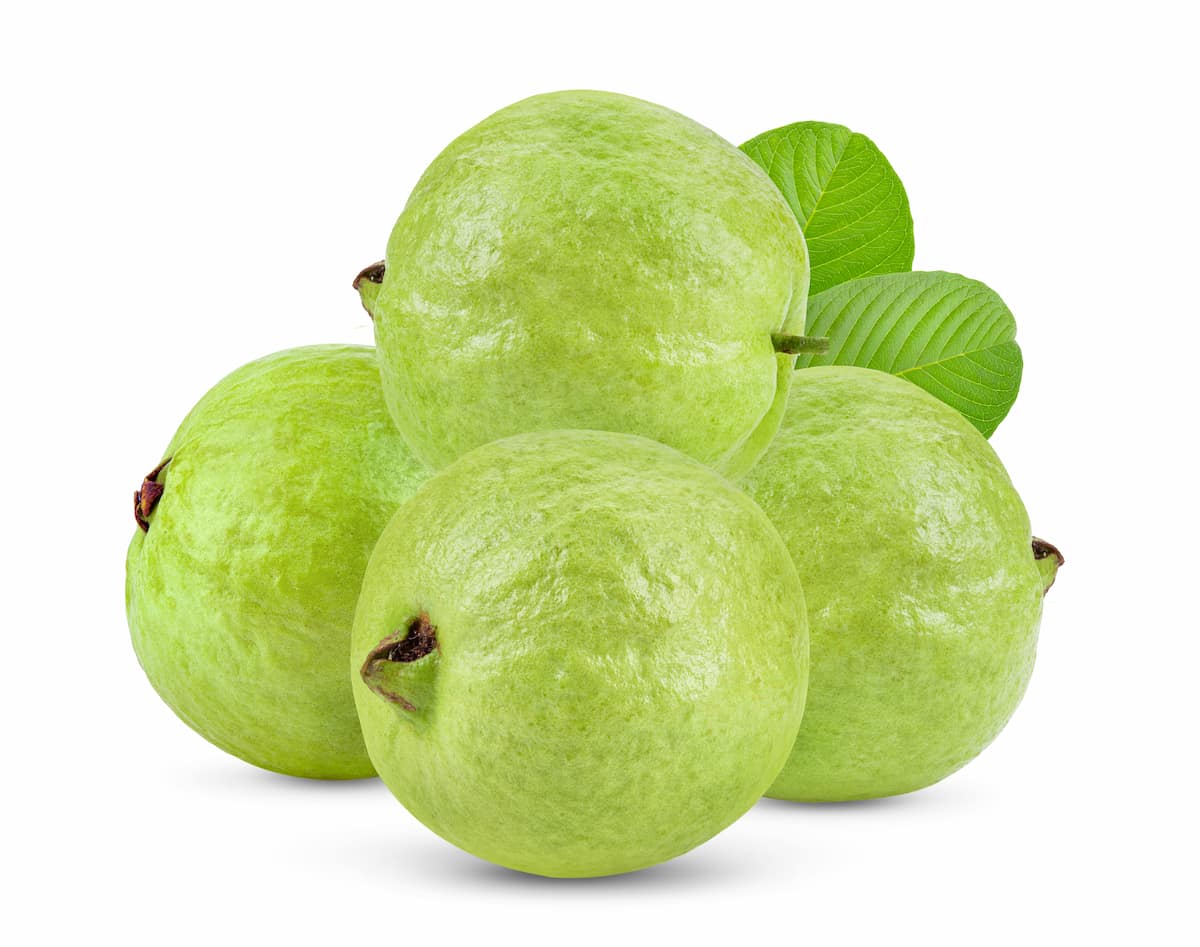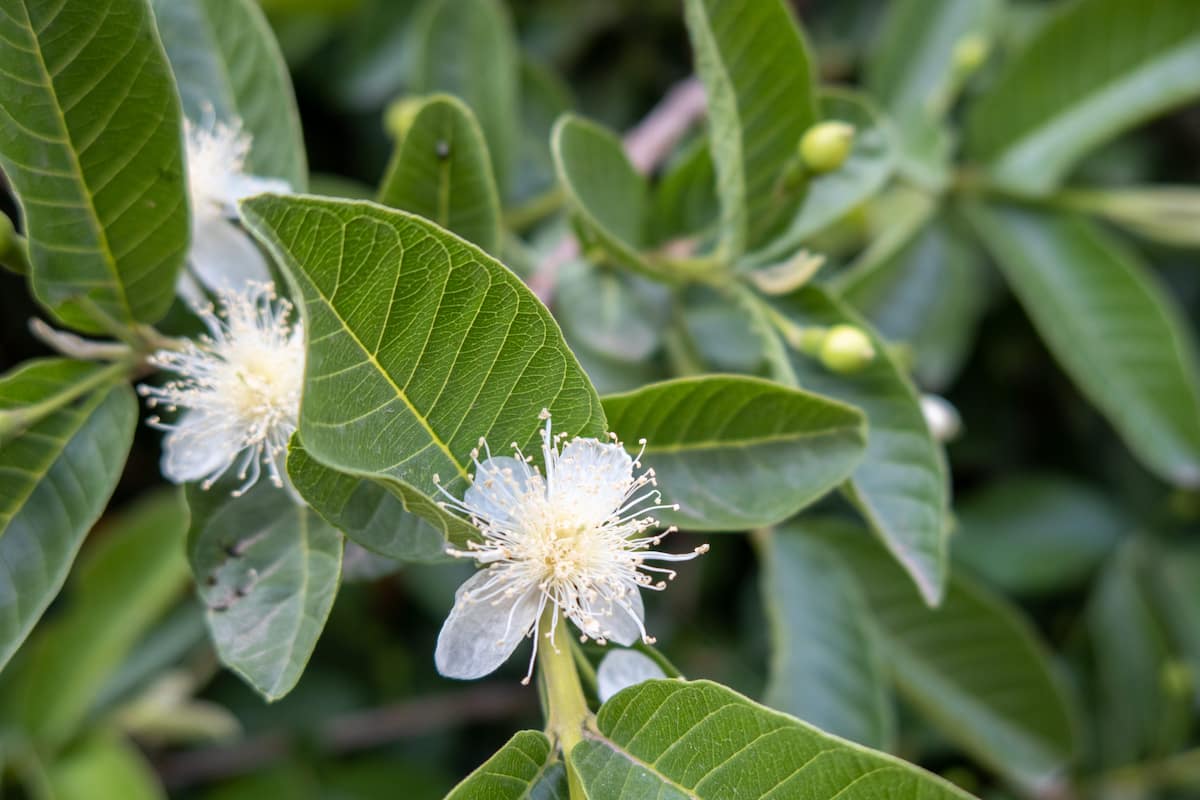Growing guava in a greenhouse can be a rewarding experience for fruit lovers and gardeners alike. The guava tree is a tropical species that originates from Central America and prefers warm climates. It can be grown outdoors in USDA Hardiness Zones of 9 and warmer, but if you live in a cooler region, consider growing guava in a greenhouse. When growing guava in a greenhouse. With the right care and attention, you can enjoy a bounty of delicious guavas for years to come.

How to Grow Guava in a Greenhouse
Guava Varieties Suitable for Growing in Greenhouse
| Guava Variety | Tree Height |
| Barbie Pink | 5-6 Feet |
| Lalit | 5-15 Feet |
| Ruby Supreme | 10-20 Feet |
| Beaumont Guava | 3-16 Feet |
| Red Malaysian | 10-30 Feet |
| Red Indian | 8-12 feet |
Soil Requirements for Growing Guava Trees in the Greenhouse
Growing guava trees in the greenhouse require soil with specific characteristics to ensure healthy growth and fruit production. The ideal greenhouse soil for growing guava trees should be loamy, well-draining, and slightly acidic. The soil pH should range between 5.5 and 6.5, as guava trees do not thrive in highly acidic or alkaline soils. The soil should also have good aeration and drainage so water can easily percolate. Additionally, the soil should retain enough water to keep the roots of the guava trees moist without becoming waterlogged.
Sunlight and Temperature Requirements for Growing Guava Trees in the Greenhouse
Guava thrives in humid and dry climates, is highly resistant to drought and sensitive to waterlogging, and can be grown in tropical and subtropical climates. For it to thrive and produce, it needs lots of full sun and warm conditions. It is recommended that guava trees receive at least six hours of sunlight daily, but they prefer eight to ten hours. They can tolerate heat but perform best in temperatures between 18 and 32°C. A temperature of 46°C can be tolerated by it.
How to Grow Guava from Seed
- Seeds can be soaked in water for 10-15 days or boiled for 5 minutes before planting to speed up germination. Softening the hard coating of the guava seeds will encourage the inner embryo to germinate.
- Sow the seeds about a quarter inch below the soil’s surface in a small pot filled with seed-raising soil. Make sure the soil is moist.
- Maintain a high humidity inside the soil by covering the pot with plastic wrap.
- It is recommended that guava fruit seeds be germinated at temperatures between 20 and 25°C. The tiny sprouts that emerge from the soil after germinating guava seeds take about 3-10 weeks. As soon as the seedlings emerge from the soil, remove the top plastic cover from the soil’s surface.
- When seedlings reach 4 to 18 inches in height, transplant them.
Transplanting Guava Seedlings in Greenhouse
- Prepare a site for planting in full sun by mixing well-rotted compost or manure with the soil.
- Prepare a hole twice as deep as the tree’s roots and twice as wide as they are. Fill the hole with a cup of all-purpose fertilizer.
- Plant trees with a stake in place. At least 2 feet deep, drive the stake into the ground to the one side of the hole.
- A soil mark from the nursery pot must be level with the soil surface surrounding the plant. Make sure the roots are spread out in all directions.
- Make sure the soil is completely packed into the hole so that there are no air pockets between the roots. Mix half native soil and half aged compost or commercial organic planting mix in the hole.
- The soil should be watered in, and a modest basin should be constructed around the trunk to hold the water when the tree is watered.
- A stake should be secured to the tree with tree ties.
- The tree should be watered thoroughly after planting and fertilized with a high-phosphorus liquid starter fertilizer.
In case you missed it: How to Increase Female Flowers in Guava: Explained in 10 Simple Steps

Fertilizers Requirements for Growing Guava Trees in the Greenhouse
When the tree is young, fertilize it once every one to two months and then three to four times a year as it matures. Guava trees require high nitrogen levels, phosphoric acid, potash, and magnesium for optimal fruit production. For example, 6-6-6-2 can be worked into soils before the growing season’s onset and then applied thrice during the growth phase.
Watering Requirements for Growing Guava in Greenhouse
Despite being somewhat drought-tolerant once established, your guava isn’t drought-tolerant when it’s young. In their first year of growth, young trees should be watered every other day, except in winter when temperatures are cooler, and the tree is dormant. For optimal growth, young small guava plants need evenly moist soil, especially during flowering. Overwatering invites fungal and other diseases during winters and monsoons, reducing the rate during these seasons. Organic matter or compost mulched around the guava plants’ beds helps keep the temperature even and prevents water loss.
Pruning Guava
Guavas can be pruned annually to maintain a 6 to 10 feet height. Keep guavas small by pinching out their growing tips. Do heavy pruning every other year to keep a tree in the desired height range to maintain a certain height. Leaving some older wood in place is a good idea. Cut above any visible budding points whenever possible, as this is where future growth will occur.
A single-trunk tree can achieve an attractive canopy shape with at least three or four lateral branches. The pruning of guava trees should also include the removal of damaged or diseased branches as necessary. Prevent the spread of disease by using sterilized pruning shears or loppers when pruning.
Guava Problems and Control
- Foliage can be attacked by anthracnose fungal disease in humid climates; apply fungicides if necessary.
- Root-rot nematodes can reduce plant vigour; solarizing the soil is the only way to control it.
- Guava is susceptible to attack by the guava whitefly, the guava moth, and the Caribbean fruit fly in southern Florida. Pheromone traps and yellow sticky traps can be used to control these pests.
Harvest and Storing Guava
Guavas grow from seed that bears fruit after about eight years; seedlings bear fruit after three to five years. Guava fruit will be ready for harvest about 20 to 25 weeks after flowering and pollination. A guava fruit should be picked when it is full-sized, soft, and aromatic. If you are harvesting fruit early, choose the fruit of a good size, leaving small fruits to develop.
In case you missed it: Ultimate Guide to Growing Taiwan Pink Guava: How to Plant, Prune, Care, and Harvest

Early harvests of guava fruit should have a lighter green hue and slightly firmer skin as they approach ripeness. Avoid damaging branches when picking fruit by not yanking on the tree. Snip through the wood above the fruits with a sterilized pair of pruning shears. You will protect both your produce and your tree in this way.
Conclusion
There are tropical parts of America where guavas are cultivated, and the West Indies are the source of guava. The fruits of these small trees are packed with Vitamin C and can be grown in greenhouses or sunrooms. Due to increased demand in foreign countries, guavas are also being grown in greenhouses commercially.
- Feed Your Flock for Less: Top 10 Tips to Save on Chicken Feed
- Ultimate Guide to Ossabaw Island Hog: Breeding, Raising, Diet, and Care
- Hatching Answers: The Top 10 Reasons Your Chickens Aren’t Laying Eggs
- Eggs and Economics: Breaking Down the Cost of Raising Backyard Chickens
- Defend Your Greens: Proven Methods to Keep Iguanas Out of Your Garden
- Ultimate Guide to Cinnamon Queen Chicken: A Comprehensive Guide for Beginners
- Ultimate Guide to California Tan Chicken: Breeding, Raising, Diet, Egg-Production and Care
- Ultimate Guide to Marsh Daisy Chicken: Breeding, Raising, Diet, and Care
- 10 Types of Chicken Farming Businesses You Can Start for Profits